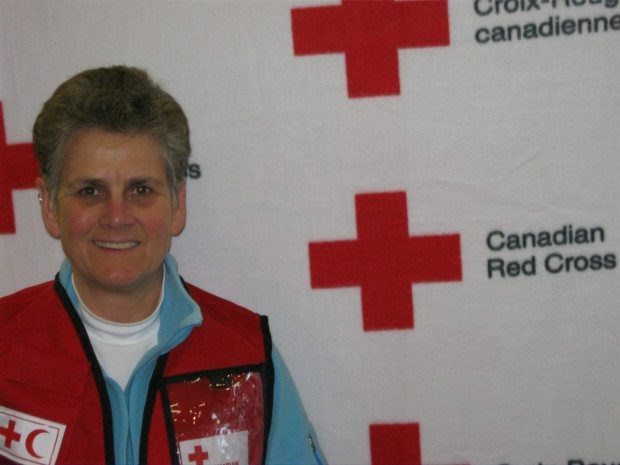It's nearly midnight Thursday in Tokyo. Canadian Red Cross worker Pat Laberge planned a quick beer with her colleagues before bed, to debrief after a long day travelling more than 1,000 kilometres to observe the earthquake and tsunami damage along Japan's northern coast.
"Towns all along the coast are absolutely devastated," Laberge said by phone. "You're driving along a highway like any in sa国际传媒 and see a town from the distance in a bay. Then you get closer and see wood-splintered piles, cars thrown around like toys and boats in the middle of the street."
Laberge is the Asia programs manager for the Canadian Red Cross, in Japan as part of an international planning team.
"The Japanese Red Cross realized they were going to need help and expertise to recover. Their specialty is to provide medical help and they do that very well," she said. The team includes members from Australia, South Korea, China, Turkey and the U.S.
Laberge has 17 years experience with the Red Cross and completed her master's degree in conflict analysis and management at Royal Roads University in 2009. She was inspired to take the program after working for 18 months helping victims of the 2004 Indian Ocean earthquake and tsunami.
"It was extremely challenging and I wanted to learn better practices, especially interorganizational," she said of her experiences then, mainly in Sri Lanka. "I learned so much in my [Royal Roads] degree. It was very relevant and I apply it."
Laberge arrived in Japan on Tuesday and planned to stay until Saturday, but may be evacuated due to concern over radiation from the country's unstable nuclear power plants.
She said there are similarities between the disaster areas she's visited, despite economic and development gaps between the countries.
"When villages get wiped out it looks the same. When lives are lost, that sense of loss is the same," she said.
Laberge said the people she has met in the most-affected areas are still in survival mode.
"The Japanese military is out cleaning up, searching for bodies," she said. "At this point, they've gone past the search-andrescue phase."
Laberge described the destruction of some of the areas she visited, such as Kamaishi City in the Iwate prefecture -about 600 kilometres north of Tokyo, known for its eco-tourism and steel production.
The earthquake, though one of the biggest on record, did little damage to the town's well-built structures compared with the massive wave that came after.
"I stood on a mountain looking at a completely burned-out valley below. As the wave came in it had dragged debris, broke an oil tank and caught fire," Laberge said.
"It must have looked like the apocalypse to people here."



